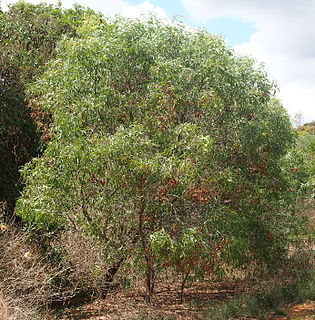
Acacia leptocarpa, commonly known as north coast wattle, is a shrub or small tree native to New Guinea and coastal regions of northern Australia.

Acacia gibbosa is a shrub or tree belonging to the genus Acacia and the subgenus Juliflorae native to Western Australia.

Acacia hammondii, also known as Hammond's wattle, is a tree or shrub belonging to the genus Acacia and the subgenus Juliflorae that is native across northern Australia.
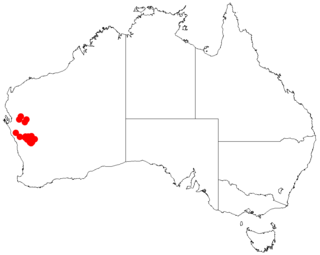
Acacia incognita, also known as false sugar brother, is a shrub or tree belonging to the genus Acacia and the subgenus Juliflorae that is endemic to Western Australia.

Acacia neurophylla, also known as wodjil, is a shrub or tree belonging to the genus Acacia and the subgenus Juliflorae that is endemic to south western Australia.

Acacia palustris, commonly known as needlewood, is a tree or shrub belonging to the genus Acacia and the subgenus Juliflorae that is native to an arid area of western Australia

Acacia resinimarginea is a tree or shrub belonging to the genus Acacia and the subgenus Juliflorae that is endemic to western Australia.
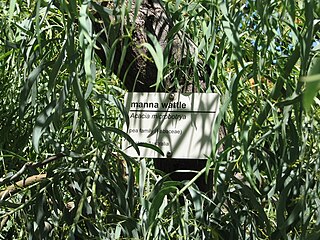
Acacia microbotrya, commonly known as manna wattle or gum wattle, is a shrub or tree belonging to the genus Acacia and the subgenus Phyllodineae that is native to Western Australia.

Acacia donaldsonii is a shrub of the genus Acacia and the subgenus Plurinerves that is endemism in an area of south western Australia.

Acacia duriuscula is a shrub or tree of the genus Acacia and the subgenus Plurinerves that is endemic to an area of south western Australia.

Acacia eremaea is a shrub or tree of the genus Acacia and the subgenus Plurinerves that is endemic to an area in western Australia.
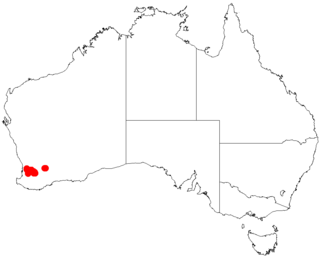
Acacia gemina is a shrub or tree of the genus Acacia and the subgenus Plurinerves that is endemic to an area of south western Australia.

Acacia kenneallyi is a shrub or tree of the genus Acacia and the subgenus Plurinerves that is endemic to north western Australia.
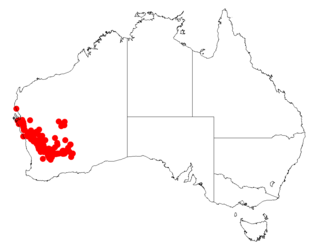
Acacia longispinea is a shrub or tree of the genus Acacia and the subgenus Plurinerves that is endemic to an area of south western Australia.
Acacia manipularis is a shrub of the genus Acacia and the subgenus Plurinerves that is endemic to north western Australia.

Acacia resinistipulea is a shrub or tree of the genus Acacia and the subgenus Plurinerves that is endemic to an area of south western Australia.
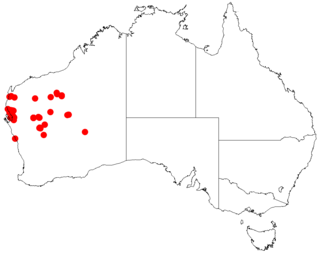
Acacia sibilans, commonly known as the whispering myall, is a shrub or tree of the genus Acacia and the subgenus Plurinerves thar is endemic to an arid areas of central western Australia.

Acacia speckii is a shrub or tree of the genus Acacia and the subgenus Plurinerves that is endemic to a small area in central western Australia.

Acacia semilunata is a shrub or tree belonging to the genus Acacia and the subgenus Phyllodineae native to north eastern Australia.

Acacia subporosa, also commonly known as river wattle, bower wattle, narrow-leaf bower wattle and sticky bower wattle, is a tree or shrub of the genus Acacia and the subgenus Plurinerves that is endemic to an area of south eastern Australia. It is considered to be rare in Victoria



















